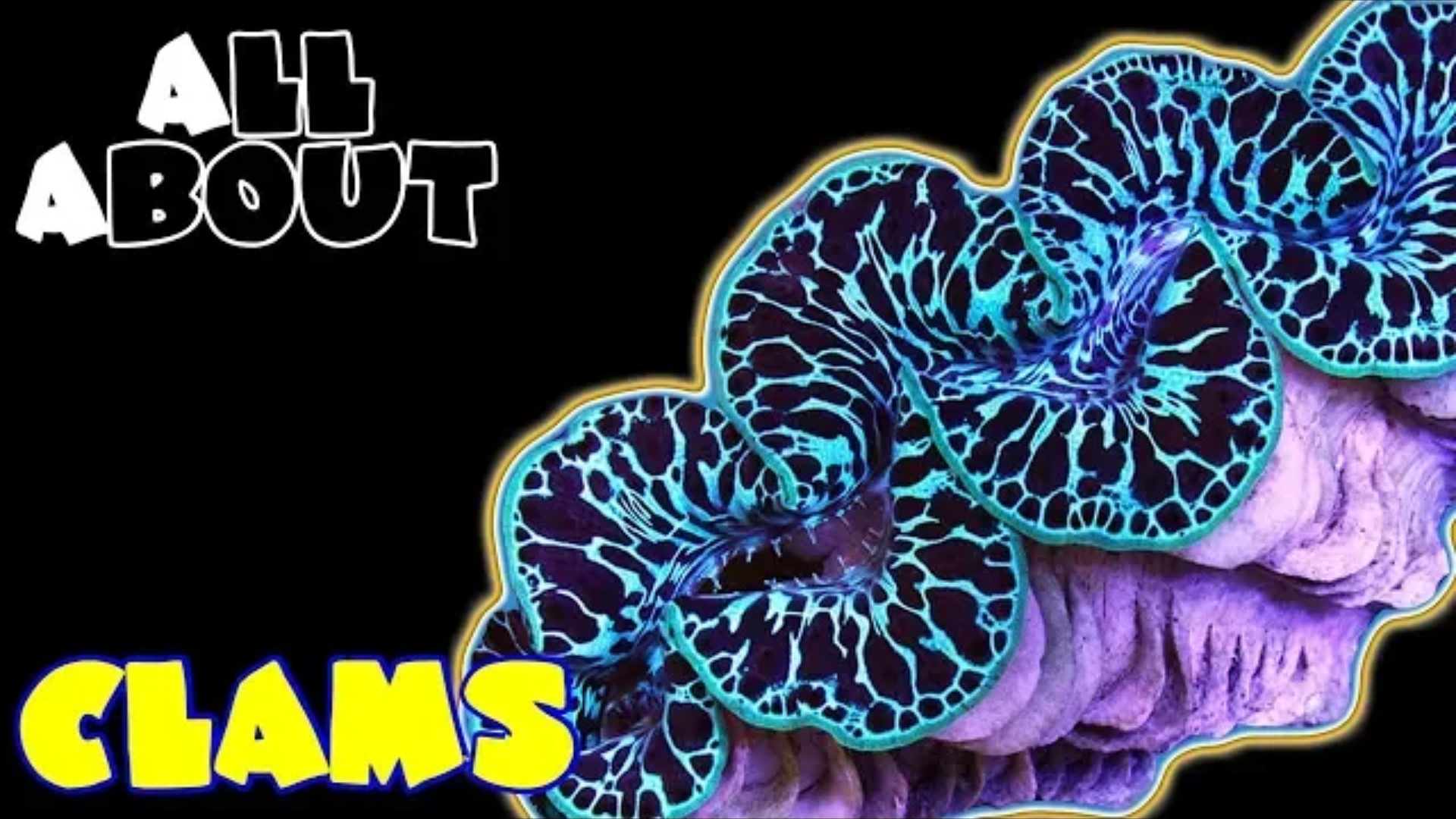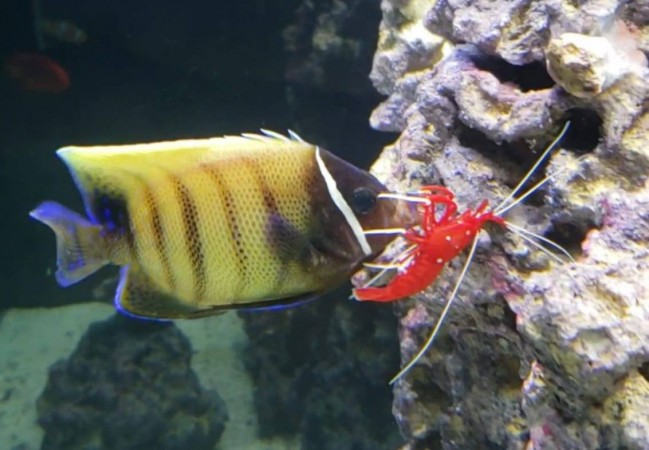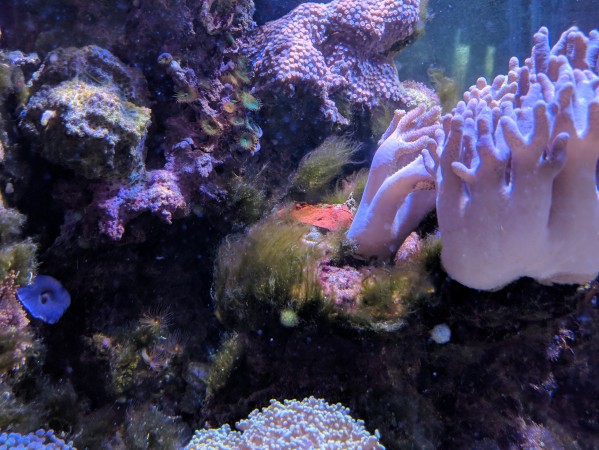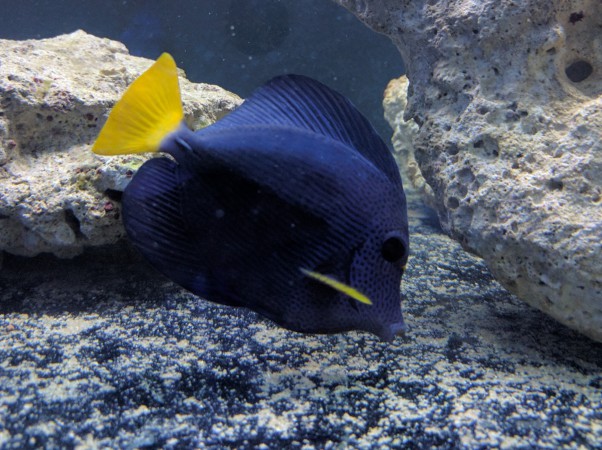- Name:
Freshwater Clam
- Family: Corbiculidae
- Species: Clam
- Scientific Name: Corbicual sp
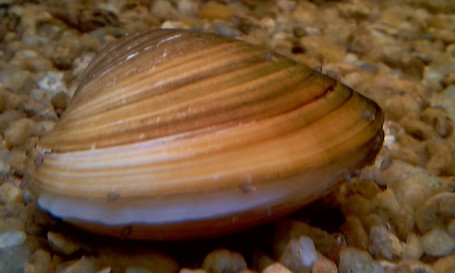

General info about Freshwater Clam
Clams are very popular in aquariums because they are the best kind of live filters that your aquarium can have. They help keep the aquarium clean and fresh. They do this by getting rid of the uneaten food and other unwanted materials from the water columns. They take in the water that contains food particles and release filtered water back into the water body, thus, consuming the food particles in the process. This filter feeding method of clams helps keep the water clean. Also, By removing uneaten food and detritus from the water column, the Freshwater Clam helps maintain water quality and lower nitrate levels.
In the wild, freshwater clams are found adequately in freshwater sources like ponds, lakes, and rivers. They prefer areas that have floors containing sand or silt, in which they can bury themselves. In captivity, they require aquariums with sandy or similar substrates for burrowing. Like many freshwater bivalves, they typically bury itself in the substrate. However, spotting its siphon protrude from the substrate is truly captivating to observe. This variety of the Corbiculidae family only reaches a length of about 2 inches, which makes it a suitable addition to well-established aquariums of almost any size. In captivity, with a little luck, a Freshwater Clam can live 6 months or more.
The aquarium must consist of a quality external filter and at least ¼ inch of gravel, as clams cannot last long without the substratum. Buy a substratum that is not too rocky because a rocky one will not help the clams to hide underneath it. They do great within the temperature limit of 65 to 80°F, which is why it is convenient to keep them in an aquarium sans water heaters. With aquarium pH, some hobbyists suggest that lower aquarium pH in the upper 6’s may also be acceptable to Freshwater Clams. Others try to keep aquarium pH above 7. Water on the acidic side may not be best for the clam’s shell over the long term.
Another important Freshwater Clam care issue relates to aquarium size and the amount of water it holds. There needs to be enough water in the tank to hold sufficient edible matter to support the clam’s nutritional needs. Some suggest one Freshwater Clam can be kept in small tanks like a 10-gallon aquarium. Small tanks may suffice, but in general, the bigger the tank the better. A 29-gallon aquarium may be a safer choice for one clam.
Aquarium water also needs to be well oxygenated and moving at a moderate and continuous pace. Keep the water movement low and calm. Clams do not like rapid or fast-moving water, as it disrupts their ability to filter food out of the water effectively. Indirect, slow-moving currents are the best way to keep your clams healthy and happy. Keep your clams out of direct currents and away from pumps or fans. If the water current is adequate, Freshwater Clams will be better able to filter enough edible material to stay healthy.
It is important to be mindful that keeping Freshwater Clams is like keeping other inhabitants in a tank. New hobbyists may think that because Freshwater Clams are “filter feeders” they will make water “cleaner” overall. On one level this may be true, but Freshwater Clams also add to the bio-load of a tank like other living organisms. Therefore, it is important to avoid overstocking. This is another reason why keeping Freshwater Clams in larger tanks may be a safer bet than small tanks. The bio-load processing capacity of small tanks are pretty limited and the margin for error is thin.
Saltwater clams are photosynthetic and feed off the products of other photosynthetic creatures, like plants, in your tank. They have symbiotic algae in their mantles (top section) that create energy that the clams then harvest. As such, they love having bright, constant lights to feed under. Metal Halides are your best option, though high-level LEDs or Fluorescents may suffice. Also, make sure the clams face upwards and are not blocked from their light source.
Clams are made up of a pair of shells, known as valves, that are equal in size and cover the creature completely. The valves are shut tight with the help of an elastic ligament possessed by the clams. They have no eyes, ears, or noses; thus, they have no sense of hearing, vision, or smell. However, they do have other important functioning organs including kidneys, a mouth, and a heart. They have an open circulatory system (body organs are surrounded by fluids that contain oxygen and other nutrients). Freshwater clams do not have hands or legs. They only have one muscular foot, which they use to move around. This foot protrudes out from between the shells.
Freshwater clams are a peaceful species and will never harm the other aquarium fish or invertebrates. In normal conditions, other fish from the fish tank will not try to harm the clams due to their hard outer shells. It is best not to combine these creatures with carnivorous pet fish as they might get hurt and eaten. The Freshwater Clam should not be housed with invertebrate-eating fish, such as freshwater puffers.
Checking how quickly a freshwater clam closes up to monitor its health is important. Freshwater clam, when touched or exposed to a shadow, should close up quickly. If it does not, it likely needs more food and/or light, or your tank could be having chemical issues. If a clam does not close up at all, it may be dead and should be quickly removed.
Freshwater Clam Diet & Nutrition
These species are filter feeders; obtains its nutrition from filtering food and detritus from the water column. In captivity, you can feed them finely crushed shrimp and clam pellets. In the wild, they are known to mainly eat plankton. They also eat small animals, small plants, and bacteria. They filter their food out of the water.
Freshwater Clams like tanks that are not “too clean”. Aquarium water needs to have plenty of very tiny debris, detritus and decaying matter floating in it. This does not mean that the tank cannot be “aesthetically clean”, it simply means that aquarium water needs to contain sufficient levels of edible matter for the clam to eat. To this end, keeping Freshwater Clams in moderately or heavily planted tanks is a good idea. Live aquarium plants continuously shed edible plant matter into the water column.
In most cases, feeding a Freshwater Clam naturally occurring edible material is not enough. It may be necessary to supplement a clam’s diet with very finely ground Calcium enriched pellets or tablets, fish flakes or algae wafers. As these supplements dissolve, a Freshwater Clam will begin filter feeding them out. Keep in mind it’s important to avoid overfeeding as access organic matter in aquarium water will lead to water quality issues. Use common sense and test tank water for ammonia levels often.
Determining Sex of Freshwater Clam
They are hermaphrodites in general.
Breeding & Spawning Freshwater Clam
Members of the Sphaeriidae species are hermaphrodites. They store the fertilized eggs in a brood pouch and give birth to young ones with shells. On the other hand, members of the family Unionidae are not hermaphroditic. Here, the male releases the sperm downstream, which is drawn in by the female. The eggs fertilize in her gills, after which the larvae are released into the water. The larvae then have to attach themselves to some specific species of fish for a certain amount of time as parasites. Once they develop their organs, they fall off the fish and carry on with their lives. These animals can start reproduction after the age of four, and generally live for anything between 25 to 100 years.
Freshwater Clam Origin
Though found in temperate freshwater rivers and lakes around the world, this species originates in Asia. These creatures are found in many places on the earth, but their highest concentrations are in the US.
Caution with Freshwater Clam
Keep in mind that the Freshwater Clam will not tolerate any copper-based medication. If treating the aquarium with medication containing copper, move the Freshwater Clam to another aquarium. Do not return the Freshwater Clam until the copper in the treated aquarium has been removed by means of chemical filtration. Be cautious with plant fertilizers because freshwater Clams may be sensitive to some of their ingredients. Also, never keep any of the invertebrates including the clams inside the fish tank while you are medicating it with an antibiotic.
Ammonia and Nitrites should be 0 ppm, and Nitrate levels should be kept in check with regular partial water changes. Calcium is important too. Freshwater Clams need calcium for healthy shell growth, so it may be worth testing water for Calcium and supplement as necessary.
If there is a suspicion the Freshwater Clam is dead, it’s important to remove it from the tank right away. Gently lift the clam from the tank with a net for inspection. Dead clams release a large spike of ammonia, which can damage or even kill other animals in the tank. This is why checking your clams regularly is so important. Make sure that they still close up rapidly. If they won't close at all, they've likely died and should be discarded. Dead clams also have a rank, fishy odor.
Acclimating Freshwater Clam
You cannot simply add saltwater to a tank and expect a clam to survive, as it needs a variety of microorganisms to be well established before it can feed. Clams are best in well-established aquariums that have had several weeks or months to cycle. Once you've successfully put a few fish in the tank and let them spend several weeks living healthily, you're likely ready for clams. After that, place clams on the bottom of the tank, where they can establish themselves. While it may look good, never place a clam up on a rock or structure. If it becomes detached and falls it can cause major damage and potentially kill the clam. Solid rocky bottoms are fine, as saltwater clams have a foot that they use to attach to the bottom of the tank. When you put the clam in the tank, turn it upside-down briefly to remove any air bubbles from inside the clam. Make sure that the clams aren't wedged into anything that prevents them from opening up.
Original Detail
| Name | Species | Family | Scientific Name | More Detail | Added by |
|---|---|---|---|---|---|
| Freshwater Clam | Clam | Corbiculidae | Corbicual sp | Clams are very popular in aquariums because they are the best kind of live filters that your aquarium can have. They help keep the aquarium clean and fresh. They do this by getting rid of the uneaten food and other unwanted materials from the water columns. They take in the water that contains food particles and release filtered water back into the water body, thus, consuming the food particles in the process. This filter feeding method of clams helps keep the water clean. Also, By removing uneaten food and detritus from the water column, the Freshwater Clam helps maintain water quality and lower nitrate levels. In the wild, freshwater clams are found adequately in freshwater sources like ponds, lakes, and rivers. They prefer areas that have floors containing sand or silt, in which they can bury themselves. In captivity, they require aquariums with sandy or similar substrates for burrowing. Like many freshwater bivalves, they typically bury itself in the substrate. However, spotting its siphon protrude from the substrate is truly captivating to observe. This variety of the Corbiculidae family only reaches a length of about 2 inches, which makes it a suitable addition to well-established aquariums of almost any size. In captivity, with a little luck, a Freshwater Clam can live 6 months or more. The aquarium must consist of a quality external filter and at least ¼ inch of gravel, as clams cannot last long without the substratum. Buy a substratum that is not too rocky because a rocky one will not help the clams to hide underneath it. They do great within the temperature limit of 65 to 80°F, which is why it is convenient to keep them in an aquarium sans water heaters. With aquarium pH, some hobbyists suggest that lower aquarium pH in the upper 6’s may also be acceptable to Freshwater Clams. Others try to keep aquarium pH above 7. Water on the acidic side may not be best for the clam’s shell over the long term. Another important Freshwater Clam care issue relates to aquarium size and the amount of water it holds. There needs to be enough water in the tank to hold sufficient edible matter to support the clam’s nutritional needs. Some suggest one Freshwater Clam can be kept in small tanks like a 10-gallon aquarium. Small tanks may suffice, but in general, the bigger the tank the better. A 29-gallon aquarium may be a safer choice for one clam. Aquarium water also needs to be well oxygenated and moving at a moderate and continuous pace. Keep the water movement low and calm. Clams do not like rapid or fast-moving water, as it disrupts their ability to filter food out of the water effectively. Indirect, slow-moving currents are the best way to keep your clams healthy and happy. Keep your clams out of direct currents and away from pumps or fans. If the water current is adequate, Freshwater Clams will be better able to filter enough edible material to stay healthy. It is important to be mindful that keeping Freshwater Clams is like keeping other inhabitants in a tank. New hobbyists may think that because Freshwater Clams are “filter feeders” they will make water “cleaner” overall. On one level this may be true, but Freshwater Clams also add to the bio-load of a tank like other living organisms. Therefore, it is important to avoid overstocking. This is another reason why keeping Freshwater Clams in larger tanks may be a safer bet than small tanks. The bio-load processing capacity of small tanks are pretty limited and the margin for error is thin. Saltwater clams are photosynthetic and feed off the products of other photosynthetic creatures, like plants, in your tank. They have symbiotic algae in their mantles (top section) that create energy that the clams then harvest. As such, they love having bright, constant lights to feed under. Metal Halides are your best option, though high-level LEDs or Fluorescents may suffice. Also, make sure the clams face upwards and are not blocked from their light source. Clams are made up of a pair of shells, known as valves, that are equal in size and cover the creature completely. The valves are shut tight with the help of an elastic ligament possessed by the clams. They have no eyes, ears, or noses; thus, they have no sense of hearing, vision, or smell. However, they do have other important functioning organs including kidneys, a mouth, and a heart. They have an open circulatory system (body organs are surrounded by fluids that contain oxygen and other nutrients). Freshwater clams do not have hands or legs. They only have one muscular foot, which they use to move around. This foot protrudes out from between the shells. Freshwater clams are a peaceful species and will never harm the other aquarium fish or invertebrates. In normal conditions, other fish from the fish tank will not try to harm the clams due to their hard outer shells. It is best not to combine these creatures with carnivorous pet fish as they might get hurt and eaten. The Freshwater Clam should not be housed with invertebrate-eating fish, such as freshwater puffers. Checking how quickly a freshwater clam closes up to monitor its health is important. Freshwater clam, when touched or exposed to a shadow, should close up quickly. If it does not, it likely needs more food and/or light, or your tank could be having chemical issues. If a clam does not close up at all, it may be dead and should be quickly removed. |
PalaciosAn |
Changed by users
| Submitted Date | Submitted By | Status | Action |
|---|---|---|---|
| 2019-01-04 18:23:43 | merve kutsal | Approved | Edit |
| 2019-01-04 18:10:19 | merve kutsal | Approved | Edit |
| 2019-01-04 17:26:34 | merve kutsal | Approved | Edit |
| 2019-01-04 17:00:01 | merve kutsal | Approved | Edit |
| 2019-01-04 16:30:20 | merve kutsal | Approved | Edit |
| 2019-01-04 15:50:18 | merve kutsal | Approved | Edit |


